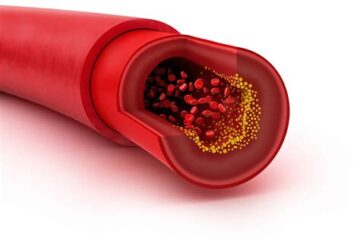
בפוסט זה מאת יואל קסלר . אנו מציגים נתונים ממחקר חדש שאישא מציע כי בחולים עם סוכרת מסוג 2, אכילת ארוחת בוקר דלת פחמימות עשויה להיות התערבות מספיקה להפחתת גליקוהמוגלובין . התקציר מודפס מחדש להלן.
In this post "Low carb breakfast may be sufficient to reduce HgbA1C @ יואל קסלר" we present data from a new study by Oliveira et al in the American Journal of Clinical Nutrition suggests that in patients with Type 2 Diabetes Mellitus, eating a low carbohydrate breakfast may be an intervention sufficient enough to reduce HgbA1C. The abstract is reprinted below. the full article can be found here.
Impact of a Low-Carbohydrate Compared with Low-Fat Breakfast on Blood Glucose Control in Type 2 Diabetes: A Randomized Trial
- Barbara F. Oliveira
- Courtney R. Chang
- Kate Oetsch
- Thomas Elliott
- Monique E. Francois
- Jonathan P. Little
Abstract
Background
In type 2 diabetes (T2D), consuming carbohydrates results in a rapid and large increase in blood glucose, particularly in the morning when glucose intolerance is highest.
Objectives
We investigated if a low-carbohydrate (LC) breakfast (∼465 kcal: 25 g protein, 8 g carbohydrates, and 37 g fat) could improve glucose control in people with T2D when compared with a low-fat control (CTL) breakfast (∼450 kcal:20 g protein, 56 g carbohydrates, and 15 g fat).
Methods
Participants with T2D (N = 121, 53% women, mean age 64 y) completed a remote 3-month parallel-group randomized controlled trial comparing a LC with standard low-fat guideline CTL breakfast. The change in HbA1c was the prespecified primary outcome. Continuous glucose monitoring, self-reported anthropometrics, and dietary information were collected for an intention-to-treat analysis.
Results
HbA1c was reduced (−0.3%; 95% CI: −0.4%, −0.1%) after 12 wks of a LC breakfast, but the between-group difference in HbA1c was of borderline statistical significance (−0.2; 95% CI: −0.4, 0.0; P = 0.06). Self-reported total daily energy (−242 kcal; 95% CI: −460, −24 kcal; P = 0.03) and carbohydrate (−73 g; 95% CI: −101, −44 g; P < 0.01) intake were lower in the LC group but the significance of this difference is unclear. Mean and maximum glucose, area under the curve, glycemic variability, standard deviation, and time above range were all significantly lower, and time in the range was significantly higher, in the LC group compared with CTL (all P < 0.05).
Conclusions
Advice and guidance to consume a LC breakfast appears to be a simple dietary strategy to reduce overall energy and carbohydrate intake and improve several continuous glucose monitoring variables when compared with a CTL breakfast in persons living with T2D.
The trial was registered at clinicaltrials.gov as NCT04550468.
For more interesting articles like this check out our Blog.


